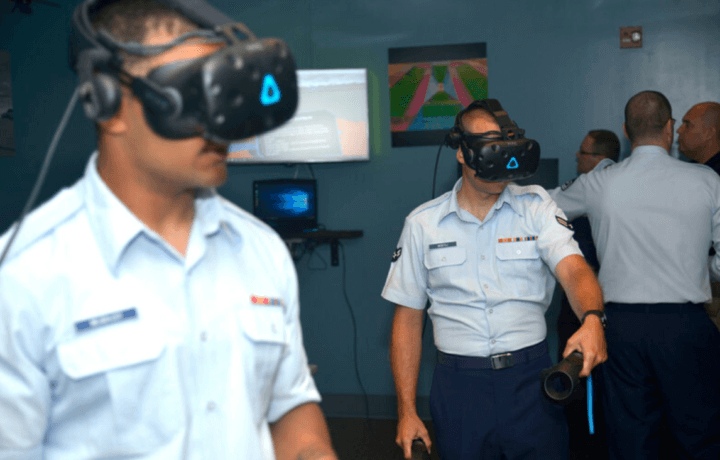COVID-19 has done a number on in person trainings, and for the military, training is important. But the military hasn’t just waited until 2020 to implement training using technologies like virtual reality (VR) and augmented reality (AR). The defense industry has long been a forerunner in using innovative technology to meet training needs.
Value of technology in the training world
Training is expensive – and sometimes dangerous. While technology brings an upfront development and implementation cost, the long term savings outweigh the initial sticker shock. As long as technology-based trainings are easily adaptable to keep with changing times, procedures, and scenarios, they are the most effective way to deliver training. Of course, with AR and VR, the return on investment can be even higher. That’s because AR and VR have the capability to lessen the feeling of distance and increase the realistic components of the trainings – giving a similar feel to an in-person training.
Virtual Reality Suicide Prevention Training
The Air Force has long been a pioneer of using VR in their training, and they joined in a suicide prevention training in mid-February. Instead of the typical computer-based training that has users simply select answers to multiple choice questions and then click next, this training was more realistic and immersive, providing a richer training experience.
Training participants put on virtual reality headsets and then enter into a scenario that depicts an individual who is in emotional distress. While the individual in distress is played by an actor, it feels realistic to the participants. Participants also need to use their own voice to select the options of responding to the distressed individual.
General Jacqueline Van Ovost, commander of Air Mobility Command hired Moth + Flame to specifically work on suicide prevention training for Airmen and their spouses.
Master Sgt. Shawn Dougherty, a VR training facilitator at Travis AFB, CA said, “This module is an Airman-to-Airman scenario. The training gives you an opportunity to be face-to-face with another Airman, in an Airman’s perspective with someone that’s in distress. You are trying to talk them down, resolve the situation, figure out what is going on with him and find out the best scenario to get him to safety.”
Growth of AR and VR in commercial sector
AR and VR aren’t just for the defense sector. As Apple, Microsoft, Facebook, and Google all vie for spots in the market, the capabilities continue to grow and more users become open to the changes in technology. Apple CEO Tim Cook touts AR as the next big thing, so while we all laughed at the Google glasses, it appears that Apple may bring them back. AR headsets may even be a piece of the work from home reality.
Microsoft Mesh is a new platform that delivers a mixed reality experience. Whether it’s about taking telemedicine to the next level, increasing teaching, training, and counseling capabilities in a more remote world, or it’s keeping our nation safe regardless of a warfighter’s location, the reality is that this year has ushered in an increased comfort level with changing the way we do things. Seems a fitting time to introduce Mesh.




